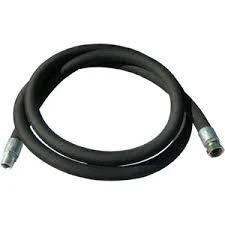power steering hose connections
Power Steering Hose Connections An Essential Guide
Power steering is a crucial component in modern vehicles, providing drivers with the ease and precision needed to maneuver their cars safely. At the heart of this system lies a complex network of hydraulic hoses, which are responsible for transporting power steering fluid between various components. Among the vital elements of this system are the power steering hose connections. Understanding these connections is essential for anyone interested in automotive maintenance or repair.
What are Power Steering Hoses?
Power steering hoses are specialized tubes designed to carry hydraulic fluid from the power steering pump to the steering gear. This hydraulic fluid is critical for assisting the driver in turning the steering wheel with minimal effort. Depending on the vehicle, there are usually two types of hoses pressure hoses and return hoses. The pressure hose carries fluid under high pressure from the pump to the steering gear, while the return hose returns low-pressure fluid back to the pump.
Importance of Proper Connections
Proper connections of power steering hoses are essential for the optimal functioning of the power steering system. A poorly connected hose can lead to fluid leaks, which may cause the steering system to fail. This failure can result in increased steering effort, leading to a dangerous situation while driving. Therefore, ensuring that each hose is securely attached to its corresponding fitting is crucial for the system's efficiency and safety.
Types of Connections
Power steering hose connections can be categorized into a few different types, including
1. Fittings These are the points where hoses connect to the power steering pump and the steering gear. Common types of fittings include O-ring, flare, and swivel fittings. Each has a specific shape and design to ensure a secure connection that can withstand the pressures of the hydraulic fluid.
power steering hose connections

2. Clamps These are sometimes used to provide additional security for the hose connections, especially in areas where vibration could loosen a fitting over time. Clamps come in various sizes and materials, allowing them to accommodate different hose diameters and environmental conditions.
3. Adapters In some cases, modifications may be necessary to fit aftermarket parts or custom setups. Adapters can facilitate the connection between different types of fittings or hoses.
Maintenance Tips
To ensure your power steering hoses remain in top condition, consider the following maintenance tips
1. Regular Inspections Periodically check all hoses for signs of wear, such as cracks, fraying, or swelling. Pay extra attention to the hose connections, as these are common points for leaks to develop.
2. Fluid Checks Monitor your power steering fluid levels. If you notice a drop, investigate for potential leaks in the hoses or their connections.
3. Professional Servicing If you encounter any issues with your power steering system, it’s advisable to consult a professional mechanic. They can diagnose the problem and ensure that all connections are secure and functioning correctly.
Conclusion
Power steering hose connections play a vital role in the overall functionality of a vehicle's steering system. Understanding the different types of connections, their importance, and how to maintain them can help ensure a safe and smooth driving experience. Regular inspections and timely maintenance will not only extend the lifespan of your power steering system but also contribute to safer road conditions for everyone. Remember, when it comes to your vehicle's power steering, it’s always better to be proactive than reactive. Stay informed and keep your steering system in top shape for the road ahead.
-
Ultimate Spiral Protection for Hoses & CablesNewsJun.26,2025
-
The Ultimate Quick-Connect Solutions for Every NeedNewsJun.26,2025
-
SAE J1401 Brake Hose: Reliable Choice for Safe BrakingNewsJun.26,2025
-
Reliable J2064 A/C Hoses for Real-World Cooling NeedsNewsJun.26,2025
-
Heavy-Duty Sewer Jetting Hoses Built to LastNewsJun.26,2025
-
Fix Power Steering Tube Leaks Fast – Durable & Affordable SolutionNewsJun.26,2025

